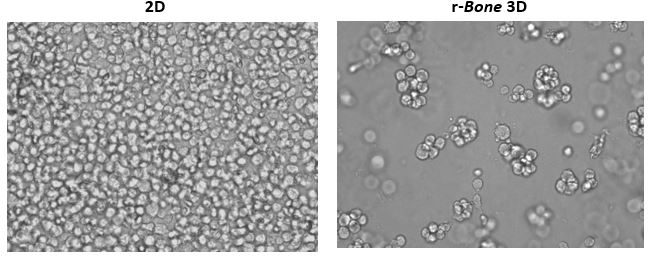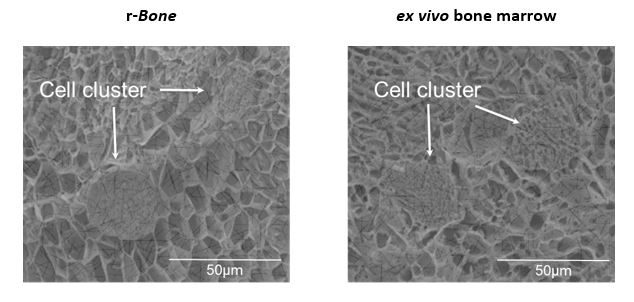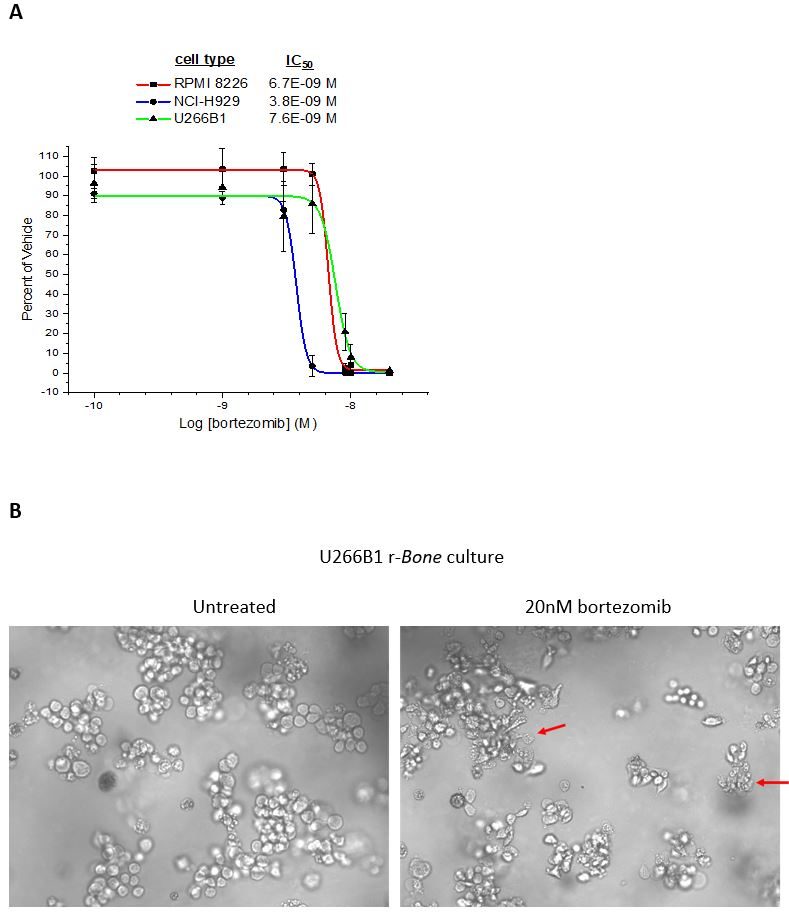In order to provide a more reflective model of how tumor cells would respond to test agents in vivo, the tissue physiology where the tumor grows and proliferates needs to be recapitulated in vitro. This process has been accomplished using Predictive Oncology® organ-specific three-dimensional (3D) matrices that support long-term culture of carcinoma cells. Labcorp and Predictive Oncology® have worked together to develop tumor-specific 3D models, based on Predictive Oncology® proprietary 3D cell culture platform for preclinical testing and research studies in the biopharmaceutical industry. This tech spotlight highlights the characteristics of the Reconstructed Bone (r-Bone) model.
Growth of tumor cells within the bone marrow is a common phenomenon in hematologic malignancies. Thus, human myeloma cell lines RPMI 8226, NCI-H929, and U266B1 were utilized in proof-of-concept studies. As shown in Figure 1, U266B1 human myeloma cells were cultured in growth medium alone (2D) or in r-Bone matrix for 4 days. While the 2D culture becomes quickly overgrown and the cells maintain a morphology characterized by a single cell suspension, the r-Bone 3D culture supports the development of cell aggregates which proliferate into larger clusters more representative of tumor morphology. These cultures can be maintained for long periods with minor intervention by the researcher.







